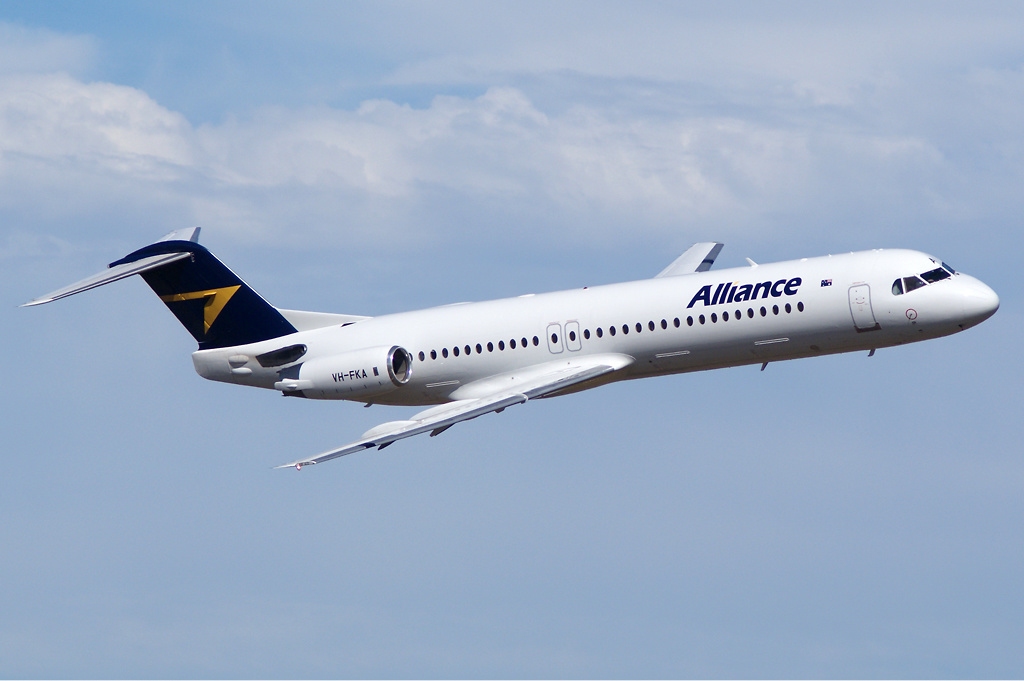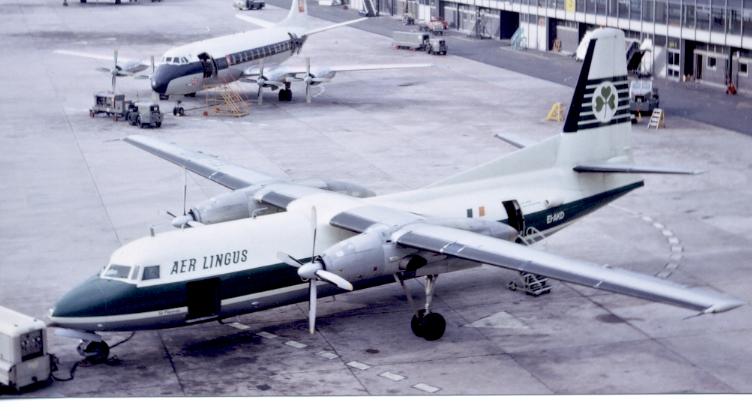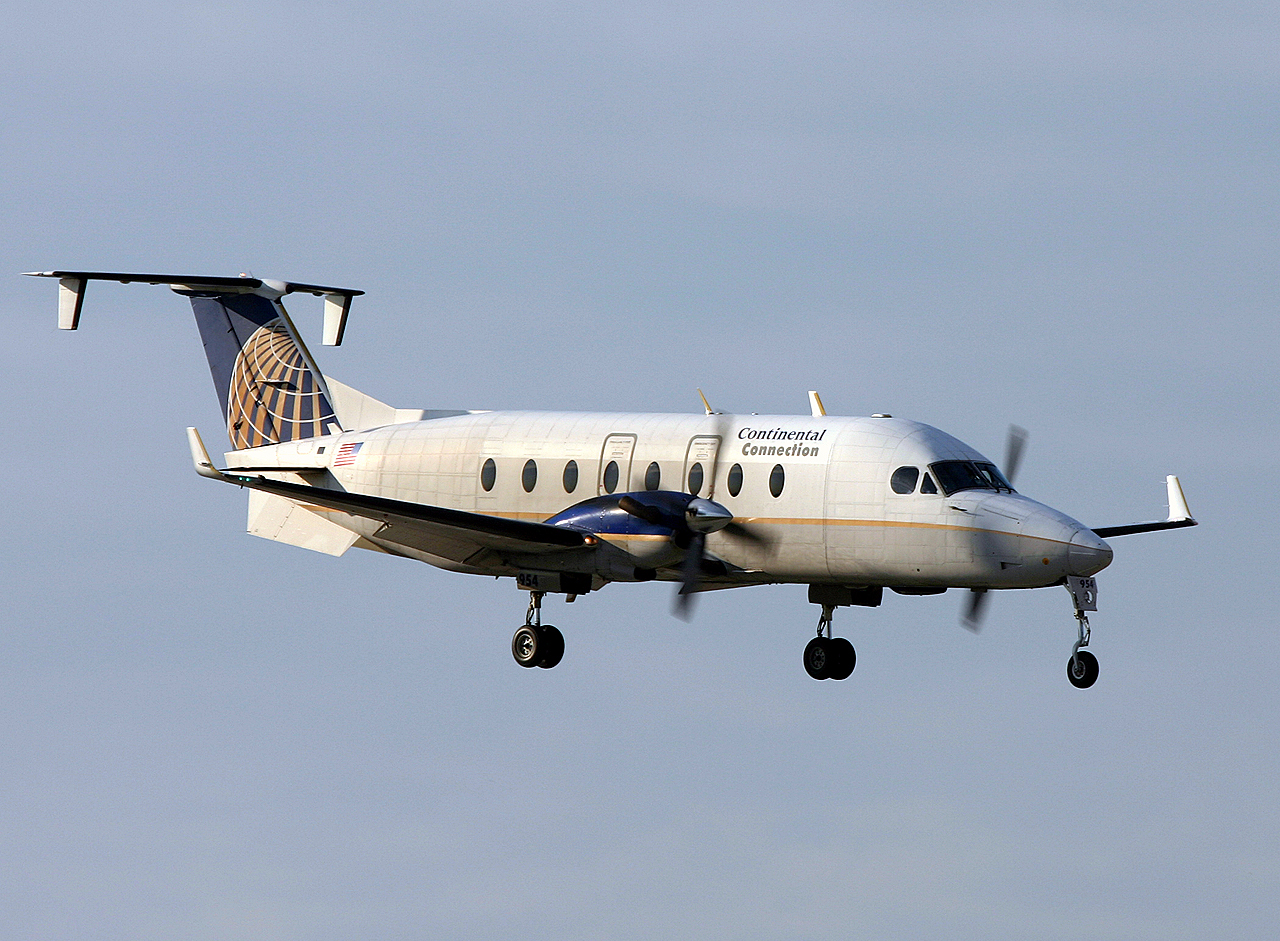|
Air Littoral
Air Littoral was an airline based in France that operated from 1972 to 2004. The airline operated domestic services as well as a small amount of regional routes. The airline also operated feeder services on behalf of Air France. History Air Littoral was founded in April 1972 and originally based at Montpellier - Méditerranée Airport in Montpellier. It started operations on 23 May 1972 with a Nice-Montpellier-Perpignan service. In 1975 it was headquartered at Aérodrome du Castellet. Over the years KLM, Euralair, Lufthansa and the SAir Group (Swissair), which sold their stake in 2001, all had ownership stakes in Air Littoral. A takeover failed in 2003 and the company was declared bankrupt. A number of groups considered taking over Air Littoral including Azzurra Air (which shortly after ceased operations due to its own financial difficulties), but none succeeded and the airline was closed down by the French authorities in February 2004. By the moment of bankruptcy Air Lit ... [...More Info...] [...Related Items...] OR: [Wikipedia] [Google] [Baidu] |
CRJ-100
The Bombardier CRJ100 and CRJ200 (previously Canadair CRJ100 and CRJ200) is a regional jet designed and manufactured by Bombardier Aerospace between 1991 and 2006, the first of the Bombardier CRJ family. The ''Canadair Regional Jet'' (CRJ) program, derived from the Challenger 600 business jet, was launched in early 1989. The first CRJ100 prototype made its maiden flight on 10 May 1991. Canada's first jet airliner to enter commercial service was introduced by launch customer Lufthansa in 1992. The 50 seat aircraft is powered by two GE CF34 turbofans, mounted on the rear fuselage. The CRJ200 has more efficient turbofan engines for lower fuel consumption, increased cruise altitude and speed. During the late 1990s, it was stretched into the CRJ700 series. Production ended in 2006 but many remain in service. In 2020, Mitsubishi Heavy Industries purchased the entire CRJ line from Bombardier, and will continue support for the aircraft. Development Origins The CRJ family has its or ... [...More Info...] [...Related Items...] OR: [Wikipedia] [Google] [Baidu] |
Fokker 100
The Fokker 100 is a regional jet produced by Fokker in the Netherlands. The Fokker 100 is based on the Fokker F28 with a fuselage stretched by to seat up to 109 passengers, up from 85. It is powered by two newer Rolls-Royce Tay turbofans, and it has an updated glass cockpit and a wider wing and tail for increased maximum weights. The program was announced in 1983 and it made its maiden flight on 30 November 1986. The variant was approved on 20 November 1987, and first deliveries to Swissair started in February 1988. American Airlines ordered 75, TAM Transportes Aéreos Regionais asked for 50, and USAir got 40. It is the basis of the shorter Fokker 70, which made its first flight in April 1993. Fokker had financial troubles and went bankrupt in March 1996, and production ended in 1997 after 283 deliveries. Amsterdam-based Rekkof group wants to restart its production and update it with new engines, but has not reached its goal. Since the 2000s, airlines have been retiring t ... [...More Info...] [...Related Items...] OR: [Wikipedia] [Google] [Baidu] |
Fokker 70
The Fokker 70 is a narrow-body, twin-engined, medium-range, turbofan regional airliner designed and produced by the Dutch aircraft manufacturer Fokker. It was developed during the early 1990s as a smaller version of the newly-developed Fokker 100. Both the Fokker 70 and Fokker 100 were preceded by the first jet airliner manufactured by the company, the Fokker F28 Fellowship. On 4 April 1993, the type performed its maiden flight, while it was introduced to service during the following year. The Fokker 70 was in production for only a relatively short period, between 1992 and 1997, during which 47 aircraft, as well as a single prototype, were completed. Its production had been terminated as a result of the bankruptcy of Fokker in 1996. There had been persistent efforts to restart production of the Fokker 70 by Rekkof. As of June 2022, 34 aircraft of the original production run are reportedly still in active service with various airlines and governments around the world. Developmen ... [...More Info...] [...Related Items...] OR: [Wikipedia] [Google] [Baidu] |
Fokker F27 Friendship
The Fokker F27 Friendship is a turboprop airliner developed and manufactured by the Dutch aircraft manufacturer Fokker. It is the most numerous post-war aircraft manufactured in the Netherlands; the F27 was also one of the most successful European airliners of its era. The F27 was developed during the early 1950s with the intent of producing a capable successor to the earlier piston engine-powered airliners that had become commonplace on the market, such as the Douglas DC-3. A key innovation of the F27 was the adoption of the Rolls-Royce Dart turboprop engine, which produced substantially less vibration and noise which provided improved conditions for passengers; another major comfort feature was cabin pressurisation. Innovative manufacturing techniques were also employed in the aircraft's construction. On 24 November 1955, the F27 made its maiden flight; on 19 November 1958, the type was introduced to revenue service. Shortly after its introduction, the F27 was recognised as be ... [...More Info...] [...Related Items...] OR: [Wikipedia] [Google] [Baidu] |
Fairchild Swearingen Metroliner
The Fairchild Swearingen Metroliner (previously the Swearingen Metro and later Fairchild Aerospace Metro) is a 19-seat, pressurized, twin-turboprop airliner first produced by Swearingen Aircraft and later by Fairchild Aircraft at a plant in San Antonio, Texas. Design The Metroliner was an evolution of the Swearingen Merlin turboprop-powered business aircraft. Ed Swearingen, a Texas fixed-base operator (FBO), started the developments that led to the Metro through gradual modifications to the Beechcraft Twin Bonanza and Queen Air business aircraft, which he dubbed Excalibur. A new fuselage (but with a similar nose) and vertical fin were then developed, married to salvaged and rebuilt (wet) Queen Air wings and horizontal tails, and Twin Bonanza landing gear; this became the SA26 Merlin, more or less a pressurized Excalibur. Through successive models (the SA26-T Merlin IIA and SA26-AT Merlin IIB) the engines were changed to Pratt & Whitney Canada PT6, then Garrett TPE331 t ... [...More Info...] [...Related Items...] OR: [Wikipedia] [Google] [Baidu] |
Embraer EMB 120 Brasilia
The Embraer EMB 120 Brasilia is a twin-turboprop 30-passenger commuter airliner designed and manufactured by the Brazilian aircraft manufacturer Embraer. The EMB 120 began development during 1974. While initially conceived as a modular series of aircraft, the ''Family 12X'' and referred to as the ''Araguaia'', intending to achieve a high level of commonality with the EMB 121 Xingu, the aircraft was redesigned and relaunched with the ''Brasilia'' name scheme during 1979. The redesign, which drew on operator feedback, reduced the seating capacity somewhat while removing commonality with the EMB 121. Its size, speed, and ceiling enabled faster and more direct services to be flown in comparison to similar aircraft. The EMB 120 features a circular cross-section fuselage, low-mounted straight wings and has a T-tail. On 27 July 1983, the prototype performed its maiden flight. During October 1985, the first EMB 120 entered service with Atlantic Southeast Airlines; it quickly entered ... [...More Info...] [...Related Items...] OR: [Wikipedia] [Google] [Baidu] |
Embraer EMB 110 Bandeirante
The Embraer EMB 110 Bandeirante (English: ''pioneer'') is a Brazilian general purpose 15–21 passenger twin-turboprop light transport aircraft designed by Embraer for military and civil use. The EMB 110 was designed by the French engineer Max Holste; it had been designed in line with specifications issued by the Brazilian Ministry of Aeronautics in 1965.''Air International'' April 1978, pp. 163–164. The goal was to create a general purpose aircraft, suitable for both civilian and military roles with a low operational cost and high reliability. On 26 October 1968, the ''YV-95'' prototype performed its maiden flight; an additional two ''EMB 110'' development aircraft would follow along with an initial order for 80 transport aircraft for the Brazilian Air Force in the following year. Type certification was received from the Brazilian aviation authorities in late 1972, permitting its entry to service in April 1973 with the Brazilian airline company Transbrasil. Various customers i ... [...More Info...] [...Related Items...] OR: [Wikipedia] [Google] [Baidu] |
Bombardier CRJ
The Bombardier CRJ or CRJ Series (for Canadair Regional Jet) is a family of regional jets introduced in 1991 by Bombardier Aerospace. The CRJ was formerly manufactured by Bombardier Aerospace with the manufacturing of the first CRJ generation, the CRJ100/200 (introduced in 1991) and the second CRJ generation, the CRJ700 series (introduced in 1999). The CRJ programme was acquired by Japanese corporation Mitsubishi Heavy Industries (MHI RJ Aviation Group) in a deal that closed 1 June 2020. Bombardier subsequently completed assembly of the order backlog on behalf of Mitsubishi. Background Bombardier claims it is the most successful family of regional jets in the world. By October 2018, 1,800 CRJs had been delivered. Production ended in December 2020 after 1,945 were built. The family consists of the following aircraft generations and models/derivatives: * CRJ100/200 ** CL-600-2B19 (Regional Jet Series 100/200/440) – maximum of 50 passenger seats * CRJ700 series ** CL-600-2C ... [...More Info...] [...Related Items...] OR: [Wikipedia] [Google] [Baidu] |
Boeing 737 Classic
The Boeing 737 Classic is a series of narrow-body airliners produced by Boeing Commercial Airplanes, the second generation of the Boeing 737 series of aircraft. Development began in 1979 and the first variant, the 737-300, first flew in February 1984 and entered service that December. The stretched 737-400 first flew in February 1988 and entered service later that year. The shortest variant, the 737-500, first flew in June 1989 and entered service in 1990. Compared to the original series, the classic series was re-engined with the CFM56, a high-bypass turbofan, for better fuel economy and had upgraded avionics. With a MTOW, it has a range of . At the -500 is similar in length to the original 737-200 and can fly 110 to 132 passengers. The -300 can seat 126 to 149 passengers while the -400 accommodates 147 to 168 seats. It competed with the McDonnell Douglas MD-80 series, then with the Airbus A320 family which prompted Boeing to update its offer with the 737 Next Gener ... [...More Info...] [...Related Items...] OR: [Wikipedia] [Google] [Baidu] |
Beechcraft 1900
The Beechcraft 1900 is a 19-passenger, pressurized twin-engine turboprop regional airliner manufactured by Beechcraft. It is also used as a freight aircraft and corporate transport, and by several governmental and military organizations. With customers favoring larger regional jets, Raytheon ended production in October 2002. Developed from the Beechcraft Super King Air, the aircraft was designed to carry passengers in all weather conditions from airports with relatively short runways. It is capable of flying in excess of , although few operators use its full-fuel range. In terms of the number of aircraft built and its continued use by many passenger airlines and other users, it is one of the most popular 19-passenger airliners in history. Development The 1900 is Beechcraft's third regional airliner after the Beechcraft Model 18 and Beechcraft Model 99 Airliner. The Beechcraft 1900's design lineage began in 1949 with the Beechcraft Model 50 Twin Bonanza, a 5-passenger, reci ... [...More Info...] [...Related Items...] OR: [Wikipedia] [Google] [Baidu] |
ATR 72
The ATR 72 is a twin-engine turboprop, short-haul regional airliner developed and produced in France and Italy by aircraft manufacturer ATR (french: Avions de transport régional or it, Aerei da Trasporto Regionale), a joint venture formed by French aerospace company Aérospatiale (now Airbus) and Italian aviation conglomerate Aeritalia (now Leonardo S.p.A.). The number "72" in its name is derived from the aircraft's typical standard seating capacity of 72 passengers. During the 1980s, French aerospace company Aérospatiale and Italian aviation conglomerate Aeritalia merged their work on a new generation of regional aircraft. For this purpose, a new jointly owned company was established, ATR, for the purpose of developing, manufacturing, and marketing their first airliner, which was later designated as the ATR 42. On 16 August 1984, the first model of the series, designated as the ATR 42-300, performed the type's maiden flight. During the mid-1980s, the ATR 72 was develope ... [...More Info...] [...Related Items...] OR: [Wikipedia] [Google] [Baidu] |
.jpg)

.jpg)

.jpg)

.jpg)



